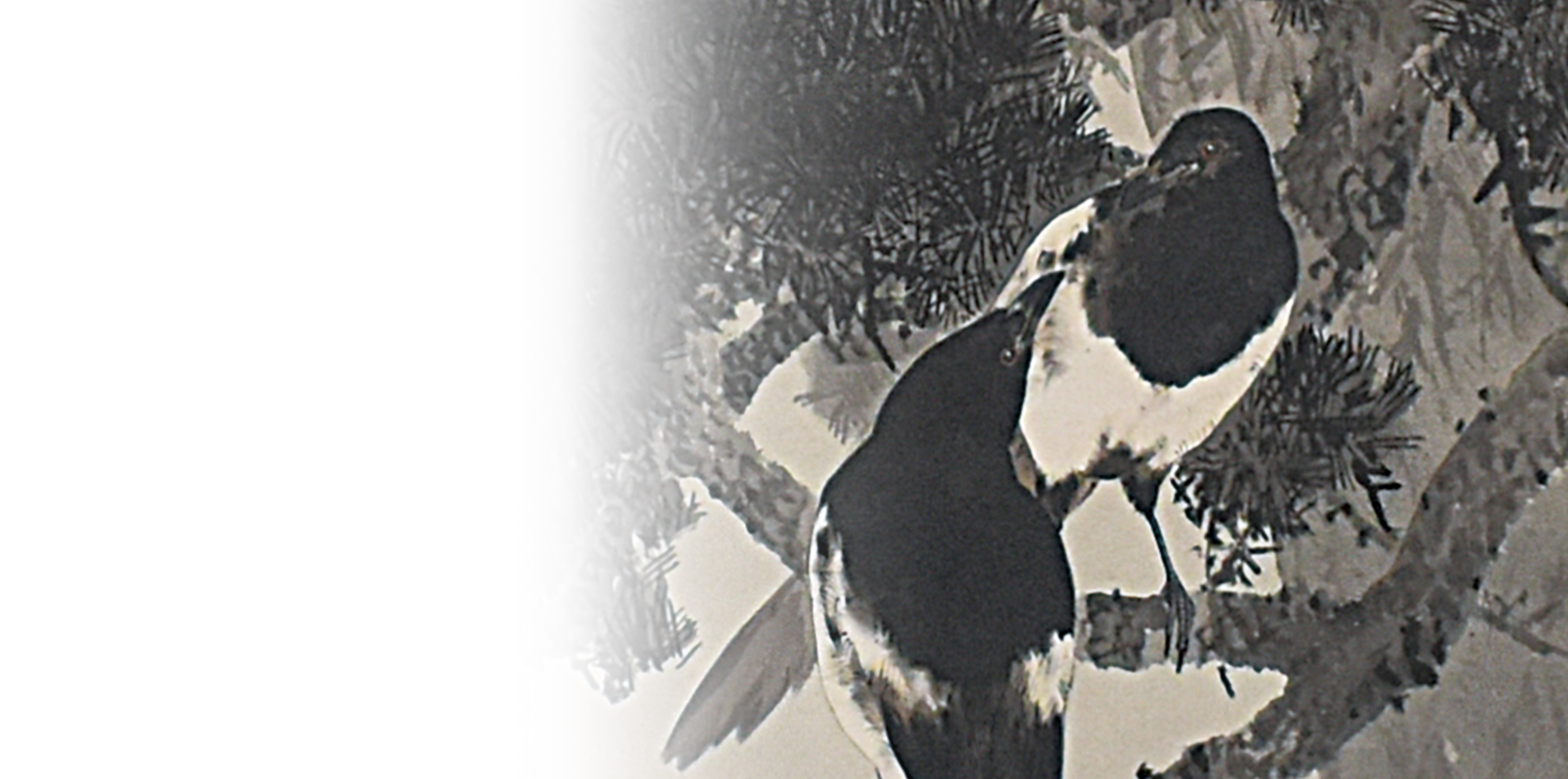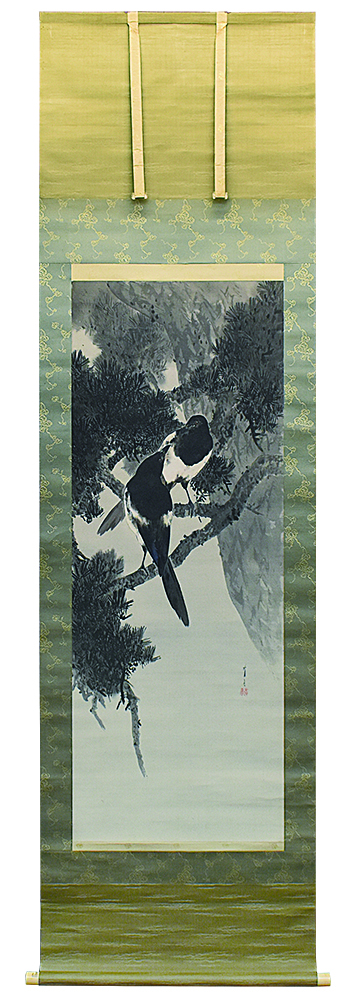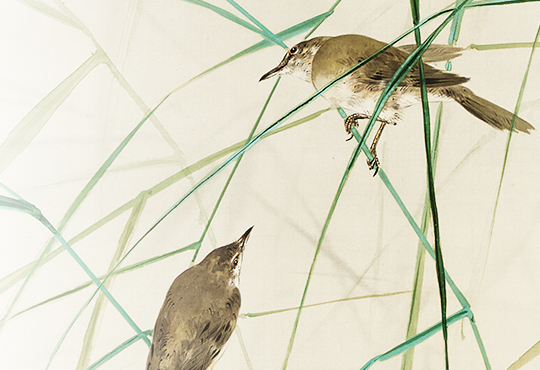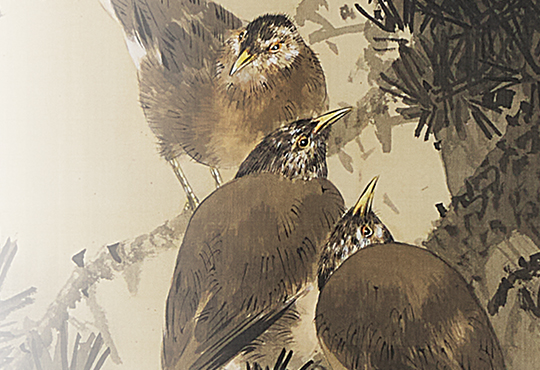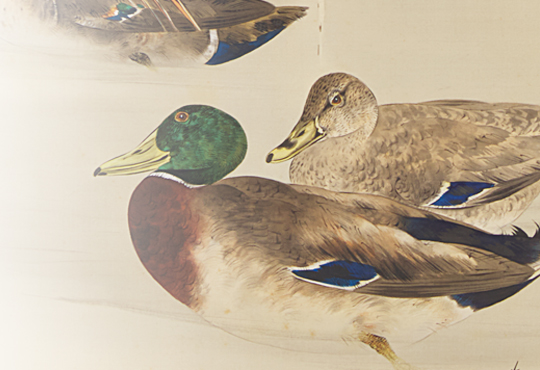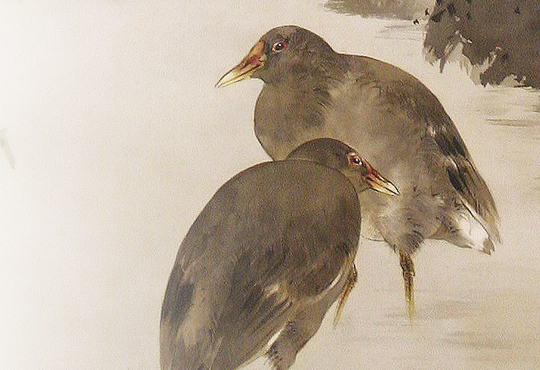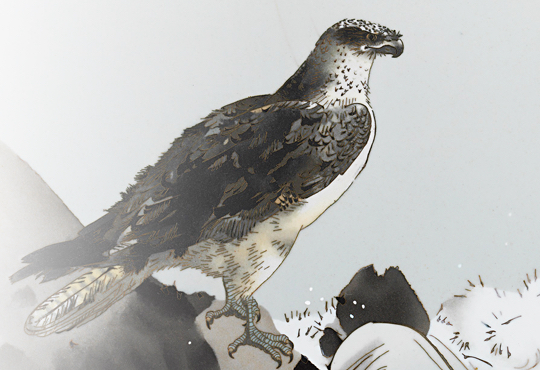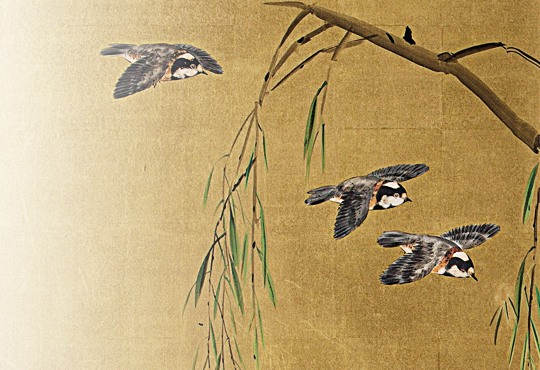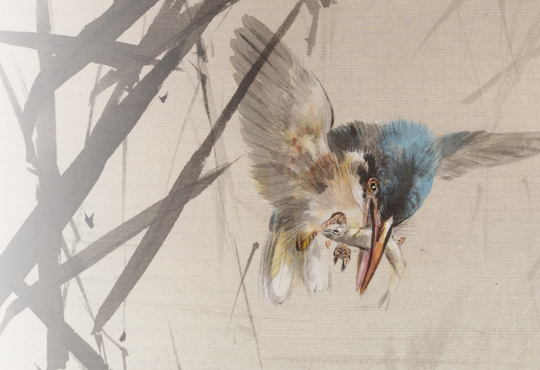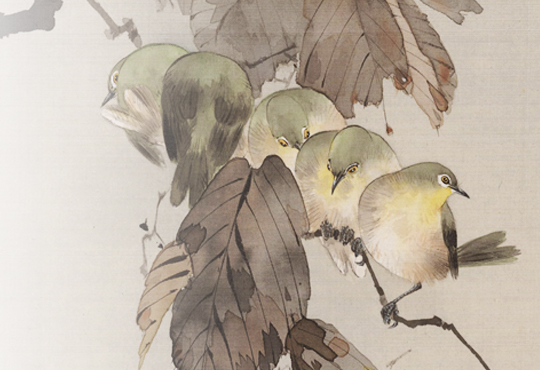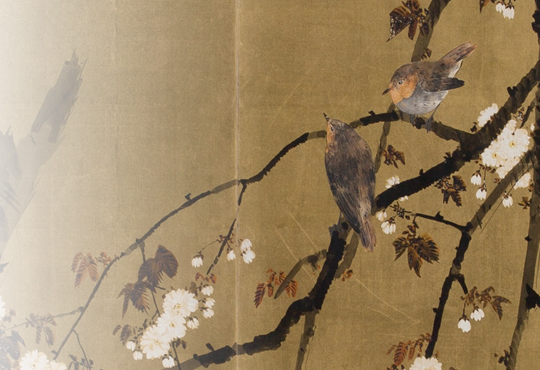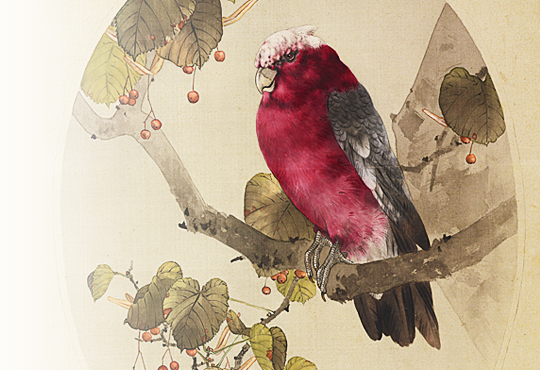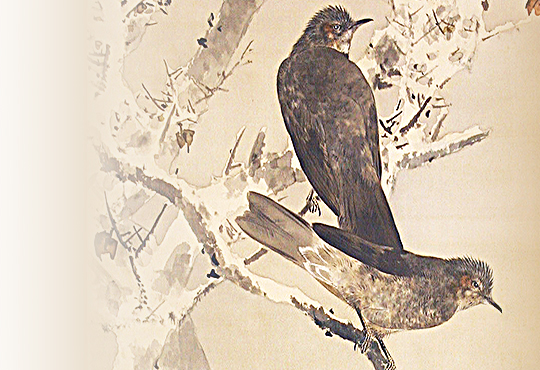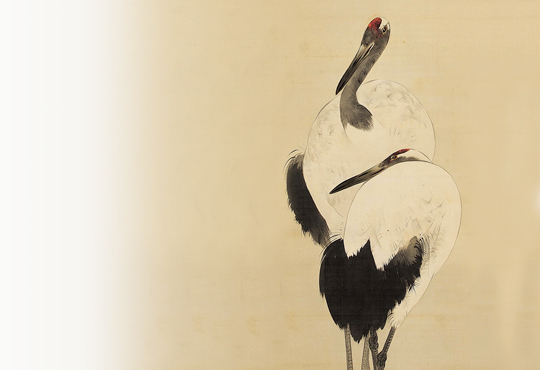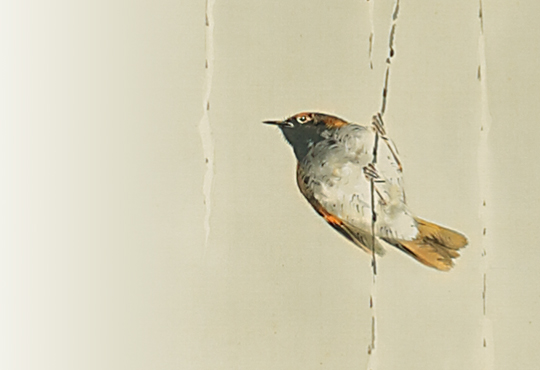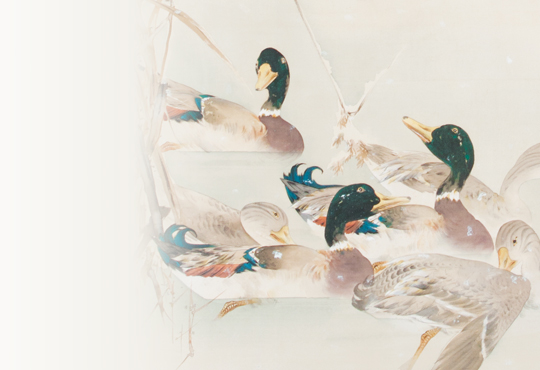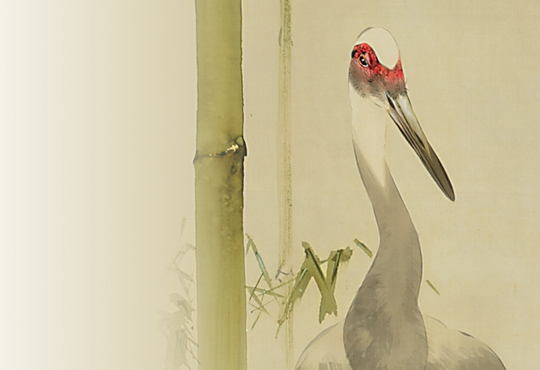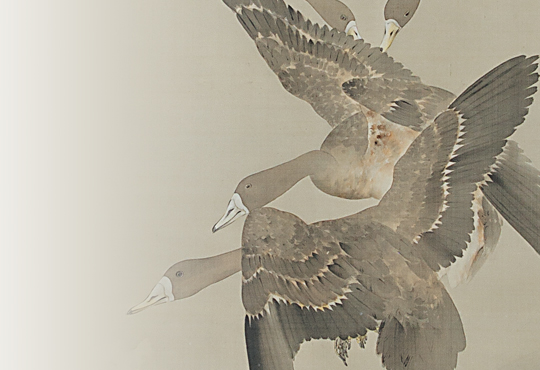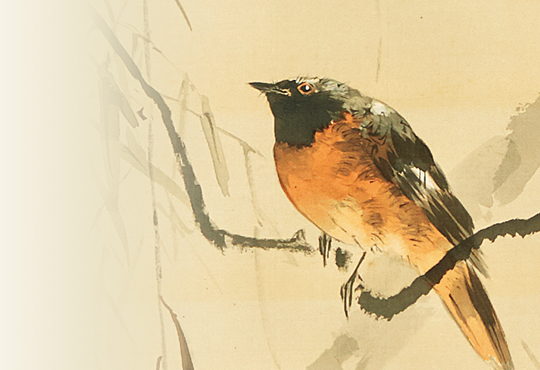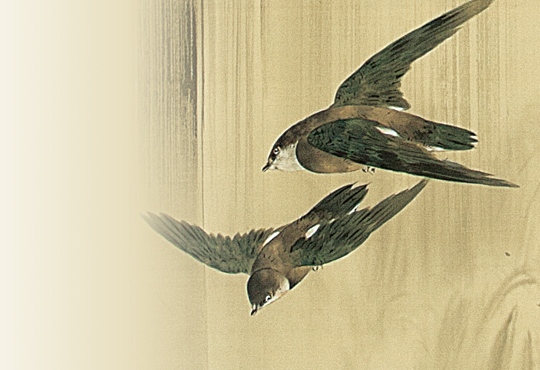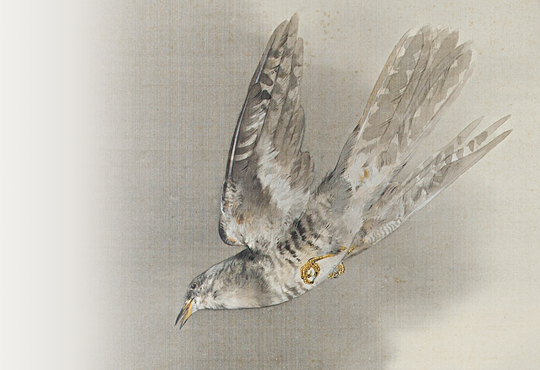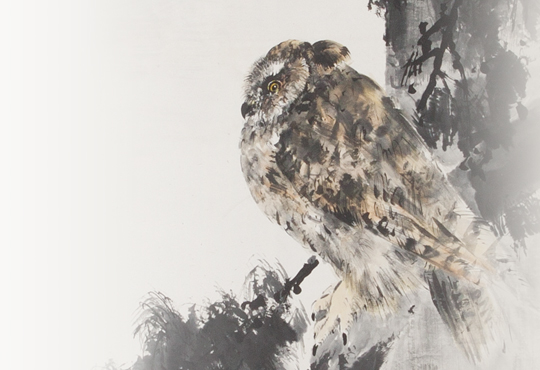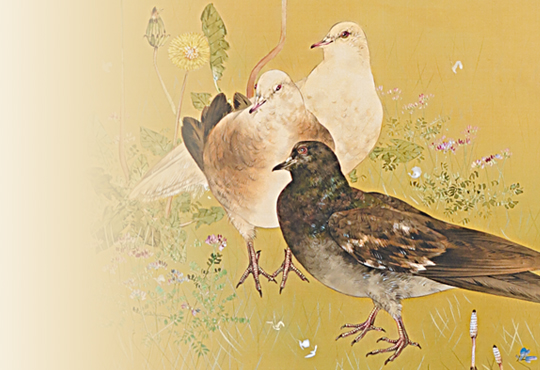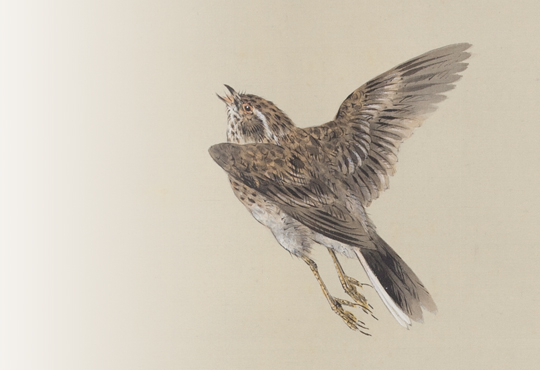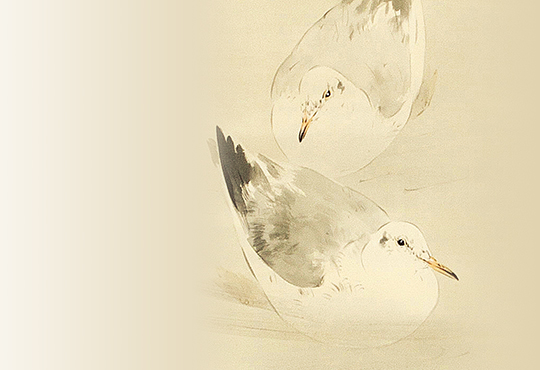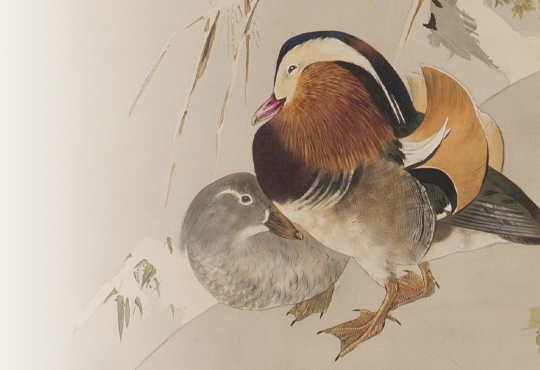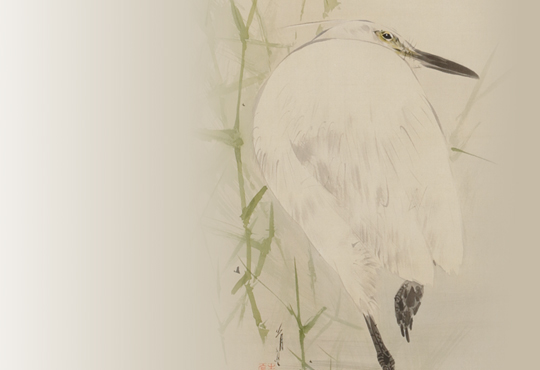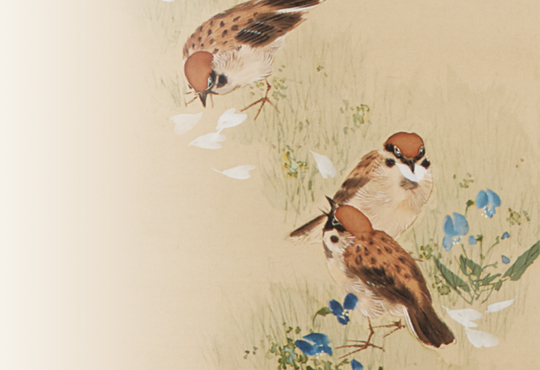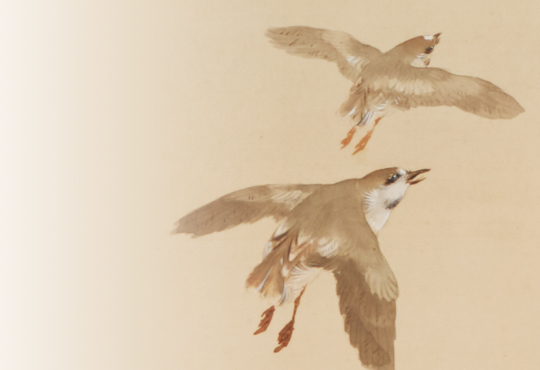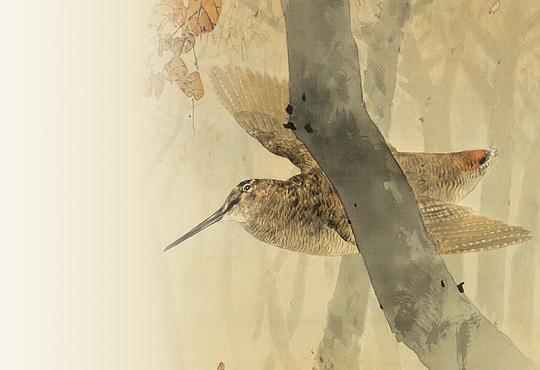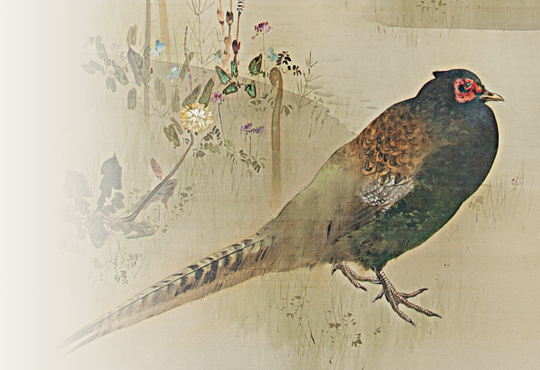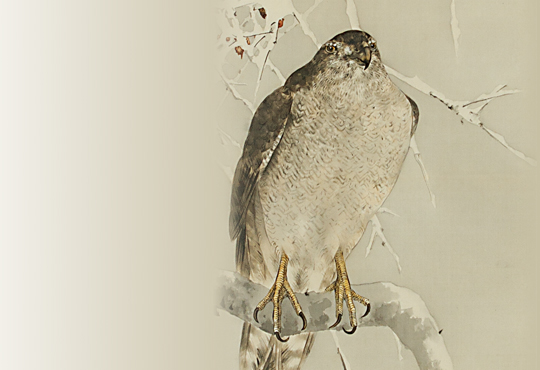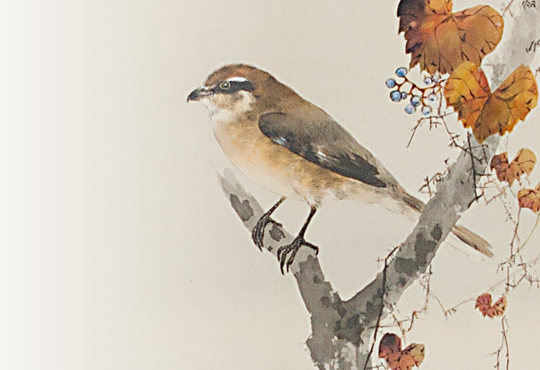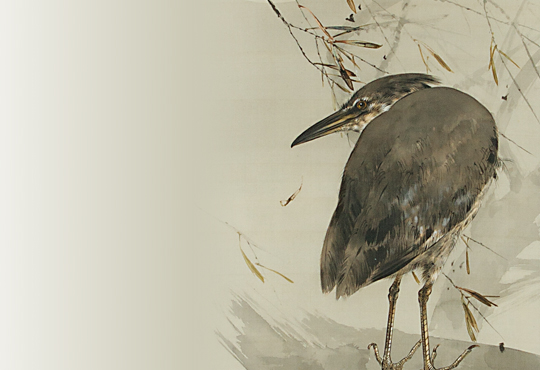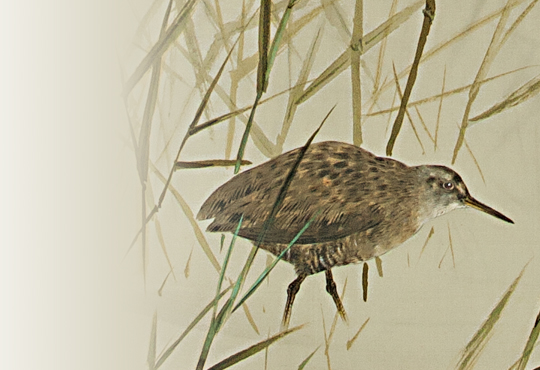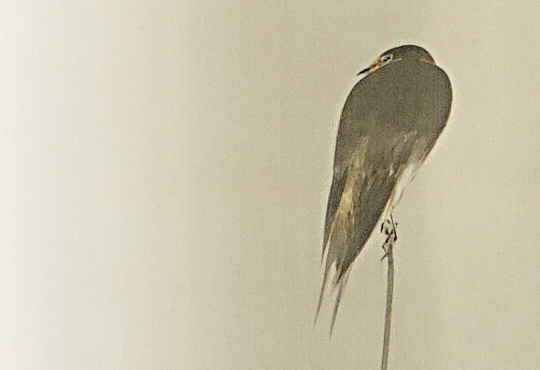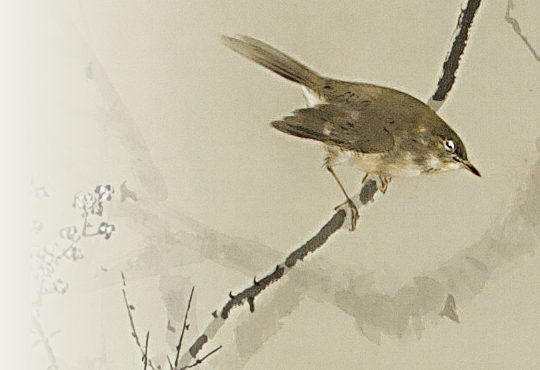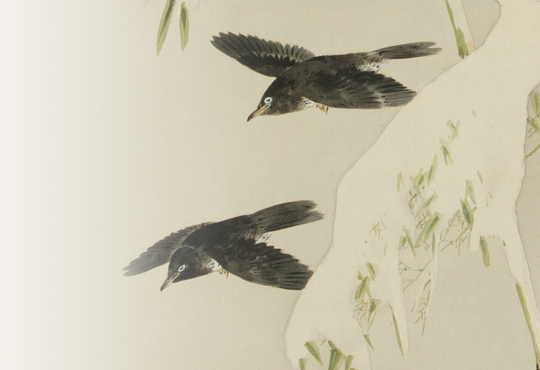Color on silk, with a box sealed and signed by the artist
130×50㎝
Private collection
vol.34 Bridging Japan and Europe: Magpie on a Pine Tree
About 650 bird species have been recorded in Japan to date. Do you feel that this is many or few? There are about 10,000 species in the world, which means that only about 6.5% of them live in Japan. On the other hand, Japan has a land area of about 380,000 km², and its territorial waters are about 430,000 km², totaling about 810,000 km². The surface area of the earth is about 500 million km², so that would mean Japan occupies only about 0.16% of the earth. Comparing this data, for such a small area, Japan can be said to be a country with a considerable number of bird species.
Now, let’s breakdown and address the variety of Japanese birds. The official list of Japanese birds in the latest revised 7th edition of “Check-List of Japanese Birds” (2012) published by The Ornithological Society of Japan contains 633 species. Among these, there are 17 “true Japanese endemic species” that live only in Japan (5 species are extinct), and 13 species that can be treated as almost Japanese endemic species (meaning species that are slightly distributed outside Japan, species whose breeding sites are almost limited solely to Japan). These “Japanese endemic species in a broad sense” account for about 4.7% of Japanese birds and are regarded as relatively high in proportion. The reasons for this are: (1) Japan is an island country, and (2) The climate is diverse as the archipelago stretches from north to south.
The remaining 95% are common species with other countries, and the extent to which they are common varies from type to type, but here I would like to present a rough picture. The world is categorized into eight biogeographic realms, based on the commonality of the plant and animal species that live in them. Most of Japan belongs to the Palearctic realm, which covers the Eurasian continent widely from Europe to East Asia, and many common species are distributed in this realm. However, because the Palearctic realm is considerably wide, there are various cases such as species that are common to Europe at the western edge, species that are common to east from Central Asia, and even more limited are species common only to East Asia. In addition, species distributed in the Indomalayan realm (Nansei Islands, Southeast Asia, South Asia), the Oceanian realm (Ogasawara Islands, South Pacific), and the Nearctic realm (North America) though small in number are also found. Most of the birds that live in Japan are composed of common species of the Palearctic realm, and to some extent also Europe.
The uniqueness of Japanese birds and their commonality with Europe strongly influenced the evaluation of Seitei’s art. As I have mentioned in previous columns, Seitei has only drawn birds that live in Japan. Both painters from the Meiji and Taisho eras and painters of the pre-Edo period depicted many foreign birds such as peacocks and parrots, and I thought that Seitei’s strong preference is strange. Among the birds that Seitei has drawn, the Green Pheasant (vol.9) and Ryukyu Robin (vol.24) are true Japanese endemic species, and Brown-eared Bulbul (vol.26) and Japanese Robin (vol.27) are included in Japanese endemic species in a broad sense. In addition, Japanese Bush Warbler (vol.2) and Bull-headed Shrike (vol.7) are distributed only in East Asia. Thus, it is possible that these works did not receive much attention in Europe, as there should have been little opportunity for Europeans to know these species. On the other hand, the Eurasian Woodcock (vol.10), Tree Sparrow (vol.11), Long-eared Owl (vol.17), and Mallard (vol.23) are common in Europe, and Europeans should have been greatly impressed by the realism reflected in Seitei’s works. These works of common species with Europe still contribute greatly to Seitei’s reputation in the United States and Europe today.
The birds depicted in this work are the Common Magpies. Common Magpies (45cm long) are birds that represent the Palaearctic realm, being widely distributed in Eurasia from Europe to East Asia. The first time I saw a magpie was in France, where I visited on my first overseas trip during my third year of university. Shortly after landing at Paris Charles de Gaulle Airport, I saw magpies flying from the window of my plane. It was a memorable moment for me, seeing my first European bird in the wild. Magpies are relatively common birds in Europe, and Seitei, who was the first Japanese painter to visit Europe, must have seen magpies at various places.
Magpies also live in Japan, but their distribution is extremely limited. Originally, it was a bird with a strong regional color that inhabited only northern Kyushu, especially the Saga plain. But recently, they have been frequently seen in Hokkaido and Honshu on the side facing the Sea of Japan, also many have begun to breed in central Hokkaido. Magpies therefore would have been a fairly unfamiliar bird for painters in the Edo period who mainly worked in Kyoto (, its vicinity) and Edo, as well as painters from the Meiji period (including Seitei) who also worked mainly in Kyoto and Tokyo. Still, because they are frequently depicted in Chinese paintings, you can see several works depicting magpies, such as “Tao Yuanming Screen” (Maruyama Okyo, Fukuda Art Museum) and “Magpie and Plum” (Okamoto Shuki, Tokyo National Museum). Considering this tradition in Chinese and Japanese paintings, and his own observation and experience in Europe, Seitei may have chosen the magpie as his subject.
In addition, the background of this work is also important. The pine that the magpies perch is a very Japanese theme. Europeans at that time may have felt familiarity and realism with the magpies, and the newness and mystique of the Asia in the pine. From an asian point of view, it is simply “Asianic”, but from a European’s point of view, it feels like the West and the East are blended, and this duality may be the true aim of Seitei in this work.
Author : Masao Takahashi Ph.D. (Ornithologist)
Dr. Masao Takahashi was born 1982 in Hachinohe (Aomori prefecture) and graduated from Rikkyo University’s Graduate School of Science. Dr. Takahashi specializes in behavioral ecology and the conservation of birds that inhabit farmlands and wet grasslands. Focusing on the relation between birds and art, he has participated in various museum and gallery talks.
